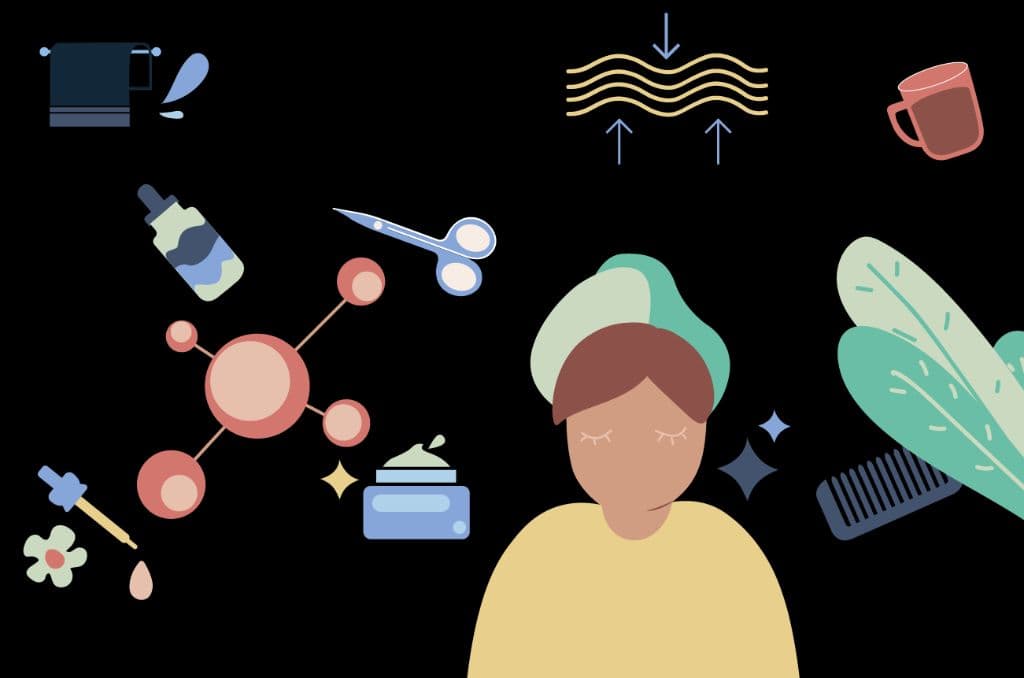This article was compiled by Alipta Jena.
Get smoother, cleaner skin with hair removal techniques
Our hair is glorious and lovely but unwanted hair on areas like your face, hands, feet, and bikini line is one of the challenges faced by women across the globe.
Unwanted hair growing on some parts of the face and body is probably one of the most annoying things to deal with. If you like your skin to be smooth and silky, then you really need to get rid of your unwanted hair.
However, hair grooming is a personal preference.
As a part of evolution, our body hair has become vestigial, so its removal is optional, and not necessary for hygienic purposes.
For practical purposes, we choose to remove underarm and pubic hair for sweat accumulates and increases body odour in these areas in humid climates like in most of India.
The thick terminal, hormone-dependent hair on our body is in the underarms, pubic area, and around the nipples and midline of the stomach. These areas become hairy around the time we hit puberty.
With age, eventually, the hair may even thin out, around and after menopause.
Why do we remove body hair?
A large part of removing excessive body hair has to do with aesthetic concerns.
Those prone to body odour will benefit from keeping underarm and pubic hair trim or removed.
Excessive hair can make those areas sweat more. Removing this hair from the body can reduce the chances of sweating more. Sweat patches on the underarm area of the shirt or other places can look unattractive.
Recurrent bacterial hair follicle infection (due to friction in the body folds, or in hidradenitis which is a medical condition) will improve with hair removal.
Permanent hair removal may be sought in those who get ingrown hair problems and folliculitis on the legs or buttocks with temporary hair removal techniques
Hormonal issues may also lead to thick hair growth in the beard area or on the neck in young women, which can be upsetting. Permanent hair removal is beneficial in this case.
Help at hand for hair removal
There are many options for hair removal, temporary and permanent.
These practices have changed through the ages with the evolution of new technology and beauty procedures.
Firstly, it depends on the level at which the hair is removed.
The difference is that when shaved or cut at the skin surface level, the hair when it grows back has a sharper cut tip and feels bristly. The hair when plucked right out from the root, when grown back has a soft tip, which doesn’t feel as prickly to touch.
When hair is cut at the skin surface level, the cut section of the hair appears thicker than that of a new hair growing from the root after plucking, but it is a big myth that hair, when shaved, grows back thicker.
Removing only the hair above the surface:
- Clipping with scissors
- Shaving, the simple and safest technique. Always shave along the same direction as the hair is growing, to avoid folliculitis, ingrowing hair, and cuts to the skin. Warm water helps soften hair, and soapy liquid makes the process smoother. After shaving, you can use cold water or ice to reduce the size of the hair openings and soothe the skin.
- Hair removal creams (depilatory creams)
Removing the hair from the root
- Threading- a relatively harmless technique, mildly painful. Good for fine facial hair.
- Pumice stone - rubbing the skin was an ancient technique to remove body hair. Excessive friction on Indian skin will result in pigmentation and is best avoided.
- Epilation – tweezing, or with electronic devices
Hair reduction creams – are prescribed for small areas like facial hair in those with hirsutism (due to hormonal issues, or genetic) to gradually suppress new hair from sprouting. It is not safe to use in pregnancy, and it can be used alongside laser procedure or medical treatment.
Waxing - which was developed from ancient Egyptian times, using sugar, to pull out the hair roots. There are hot and cold varieties of wax. Heat increases the chance of developing pigmentation on thin skin areas like the underarms and upper lip, thighs, so is best avoided if you can. Waxing can now be done at home using kits, or at the salon.
Electrolysis - in which each hair root is burned with a needle tip, now an outdated procedure.
Laser hair removal - there are several laser technologies that work to remove hair permanently (ie around a 90% reduction in hair growth)
Among these are diode laser, alexandrite laser, Nd:YAG laser and intense pulsed light (IPL) technology. They are safe on the skin.
Different technologies are used for different skin types and different hair thickness.
It targets the growing root of the hair, which is a focus rich in melanin.
The laser energy destroys the hair root, which grows back weaker and smaller every time, till it is permanently removed.
Things to remember for permanent hair removal by laser
- It is best to get it done by a qualified doctor and to check first for underlying hormonal issues alongside, in the case of thick facial hair or neck hair.
- This is a long process that may run for 6-12 months for complete permanent hair removal.
- For most people, removing excess hair from the body is very crucial for maintaining good hygiene. For others, it is essential to conform to standards of beauty norms.
- Take care not to get a cut while cleaning the body from excessive hair.
- Consult a physician if any persistent skin damage occurs from using hair removal creams or razors.
Disclaimer - This information is provided for educational purposes and should not be construed as medical advice. Please consult with your healthcare practitioners before undertaking any changes in your diet or adding supplements.
ProactiveForHer is a digital clinic for women, offering accessible, personalized, and confidential healthcare solutions. We offer products and services for out-patient health concerns of Indian women, across their lifetime - from puberty to pregnancy to menopause. To know more on the sexual and reproductive health of women, visit https://www.proactiveforher.com/

